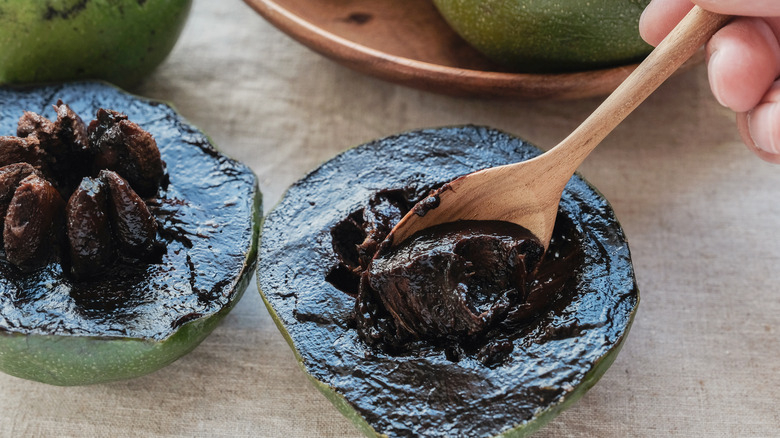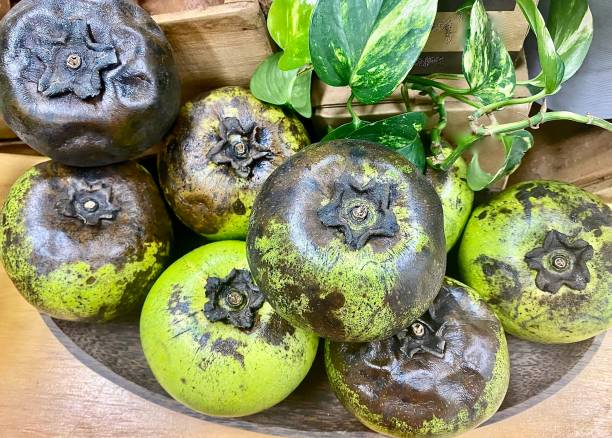Black Sapote
Black Sapotes are used in cuisines in tropical regions all over the world. The tropical winter weather is ideal for the Black Sapote, as a result, it is one of the few fruits available during the winter months in sub-tropical and tropical regions. In the Philippines, the tropical fruit is skinned and deseeded and the pulp is served with a topping of orange or other citrus juices and is also used for pie or pastry fillings. Mexicans mash the pulp and mix it with brandy and serve it with whipped cream for an adult dessert. In Central America, the fruit is fermented to make a liqueur similar to brandy.
Black Sapotes are squat, spherical fruits with green skin that resemble persimmons. A Black Sapote has olive green skin that gradually darkens as it ripens and occasionally develops black speckles. When the pulp is unripe, it is white; when it is ripe, it turns from dark brown to almost black. Its nickname comes from the flavor, which is sweet, custardy, and chocolate-like. Large, inedible, almond-shaped seeds are arranged non a pit-like cluster in the fruit's center. The fruit is typically bought unripe; ripening can take up to 10 days.












